Common THCA Flower Harvest Mistakes and How to Avoid Them
Even the most experienced cannabis cultivators can fall victim to harvest mistakes that compromise months of careful growing. Whether you're a first-time grower or a seasoned cultivator, understanding what not to do when harvesting THCA flower can mean the difference between premium-quality buds and a disappointing harvest. The reality is that the harvest phase represents one of the most critical periods in cannabis cultivation, where a single misstep can dramatically reduce potency, terpene profiles, and overall quality.
Learning from others' harvest errors is far less costly than making them yourself. In this comprehensive guide, we'll explore the 20 most common and costly mistakes that growers make during the harvest process, from timing issues to post-harvest storage problems. More importantly, we'll provide you with practical, actionable solutions to avoid these pitfalls and ensure your THCA harvest reaches its full potential.
Understanding these common harvesting problems isn't just about avoiding failure—it's about maximizing the investment of time, energy, and resources you've put into your grow. Let's dive into the biggest mistakes harvesting cannabis and how you can sidestep them entirely.
Timing Mistakes
Mistake #1: Harvesting Too Early
Why it happens: The temptation to harvest early affects nearly every grower at some point. Impatience after months of cultivation, misreading maturity signs, or simply excitement about the upcoming harvest can all lead to premature cutting. Some growers also mistake the appearance of milky trichomes as the signal to harvest immediately, without allowing for full cannabinoid development.
Consequences: Harvesting too early is one of the most devastating THCA harvest mistakes you can make. When buds are cut before reaching peak maturity, THCA levels remain significantly lower than their potential maximum. You'll also experience reduced overall yield, as buds continue to swell and gain weight in their final weeks. The resulting flower typically produces harsh, unpleasant smoke with a "green" or "hay-like" taste that no amount of curing can fully remedy.
How to recognize: Clear trichomes are the primary indicator of premature plants. Under magnification, these trichome heads appear completely transparent like glass, with no cloudiness whatsoever. Additionally, the majority of pistils will still be white or cream-colored and standing upright rather than darkening and curling inward. The buds themselves may look less dense and full compared to properly matured flowers.
Prevention: Patience is paramount when approaching harvest timing. Invest in a quality jeweler's loupe or digital microscope (60x-100x magnification) to properly inspect trichomes daily during the final weeks. Wait until at least 70-80% of trichomes have turned from clear to milky-white before considering harvest. Monitor multiple indicators simultaneously: trichome color, pistil development, bud density, and overall plant appearance.
Fix if caught: Unfortunately, you cannot "unharvest" cannabis. Once cut, the plant stops producing cannabinoids. However, you can salvage the situation by using the flower for edibles or extracts where potency is less critical. Most importantly, document what happened and commit to monitoring more carefully on your next grow to avoid harvest mistakes in the future.
Mistake #2: Harvesting Too Late
Why it happens: Overcautiousness plagues growers who've been burned by harvesting too early. Scheduling conflicts and personal emergencies can also force growers to delay harvest beyond the optimal window. Some cultivators mistakenly believe that "longer is always better," leading them to push harvest dates well past peak maturity.
Consequences: When flowers remain on the plant too long, THCA begins converting to CBN (cannabinol), a degraded cannabinoid that produces sedative, "couch-lock" effects rather than the desired psychoactive experience. The overall THCA content decreases, and terpenes begin to degrade, resulting in less aromatic and flavorful flowers. While the product remains usable, it won't deliver the intended effects or represent the strain's true characteristics.
How to recognize: Under magnification, you'll observe that the majority (60%+) of trichomes have turned amber or brown rather than the ideal milky-white. Pistils will be predominantly dark orange or brown and completely receded into the buds. The leaves may begin yellowing more than expected, and some buds might show early signs of degradation or "foxtailing" (new growth sprouting from mature buds).
Prevention: During the harvest window (typically a 1-2 week period when trichomes are mostly milky), conduct daily inspections. Mark your calendar with the expected harvest window based on the breeder's timeline and your own trichome observations. Plan your schedule to ensure availability during this critical period. Remember that the "perfect" harvest day offers only a narrow window—when 10-20% of trichomes have just begun turning amber while the majority remain milky.
Mitigation: Over-mature cannabis remains perfectly usable, just with different effects. Many users actually prefer the relaxing, sedative properties of CBN-rich flowers for evening use or sleep aid. Market or label these buds honestly about their effects, or blend them with more energetic harvests to balance the cannabinoid profile.
Mistake #3: Harvesting Based on One Indicator
One of the most common THCA harvest tips that gets overlooked is the importance of using multiple maturity indicators. Many growers make the critical error of relying exclusively on pistil color, assuming that darkened pistils automatically signal readiness. Others follow the breeder's suggested timeline religiously, without accounting for their specific growing conditions. Most dangerously, some growers never check trichomes at all, missing the most reliable indicator of cannabinoid maturity.
Why multiple indicators matter: Cannabis maturity is complex and multifaceted. Pistil color can be affected by environmental stress, certain strains naturally darken earlier, and genetics play a huge role. Breeder timelines provide general guidance but don't account for variables like lighting, nutrients, temperature, and growing medium. Trichome color offers the most accurate picture of cannabinoid development, but even this should be confirmed by other signs.
Proper assessment protocol: Check trichomes from multiple bud sites (top, middle, and lower branches), as different parts of the plant mature at different rates. Observe pistil color and recession across the plant. Consider the overall appearance—are buds still swelling, or has growth plateaued? Note the breeder's timeline but use it only as a reference point. Account for environmental factors that may have accelerated or delayed development. Create a checklist that incorporates all these elements to make informed harvest decisions.
Mistake #4: Harvesting the Whole Plant at Once
Why it's not always optimal: Cannabis plants don't mature uniformly. Top colas receive more intense light and typically develop faster than lower buds hidden in the canopy. The difference in maturity between upper and lower growth can span days or even a week, meaning some buds will be perfect while others remain underdeveloped or become overripe.
Benefits of phased harvesting: By harvesting in stages, you can cut top colas when they reach peak maturity while allowing lower buds additional time to develop. This approach maximizes both quality and yield across the entire plant. You'll notice that lower buds, when given a few extra days after removing the tops, can significantly increase in size and potency as they receive more light and the plant channels its remaining energy into them.
How to stagger harvest correctly: Begin by harvesting the main cola and top branches when trichomes reach your desired ratio (typically 70-80% milky, 10-20% amber). Leave middle and lower branches intact for 3-7 additional days, monitoring their progress. Finally, harvest the lowest branches when they've caught up in maturity. This technique particularly benefits outdoor growers and those using lower-powered lights where canopy penetration is limited.
Pre-Harvest Preparation Mistakes
Mistake #5: Not Preparing Drying Space
Consequences of scrambling post-harvest: Few things compromise a harvest faster than inadequate preparation. When you cut your plants without a proper drying space ready, you're forced into desperate measures—hanging buds in whatever space is available, often with poor temperature, humidity, or airflow control. This panic-driven approach leads directly to drying mistakes that ruin otherwise excellent flowers.
What happens when conditions aren't right: If your drying space is too warm, buds dry too quickly, locking in chlorophyll and resulting in harsh, unpleasant smoke. Excessive humidity invites mold and mildew, especially in dense colas. Insufficient airflow creates stagnant pockets where moisture accumulates, while excessive airflow dries buds unevenly and too rapidly. Any light exposure during drying degrades both cannabinoids and terpenes.
Checklist for preparation: Set up your drying space at least one week before harvest. Aim for 60-65°F temperature and 55-62% relative humidity. Install proper ventilation with gentle, indirect airflow—air should circulate around the room without blowing directly on hanging buds. Ensure complete darkness by covering windows and eliminating all light sources. Prepare drying racks or hanging lines with adequate spacing between branches. Have hygrometers and thermometers positioned to monitor conditions.
Testing environment beforehand: Run your drying space for several days before harvest to ensure stability. Check that your environmental controls can maintain target ranges despite external weather fluctuations. This trial run allows you to identify and fix problems before your precious harvest is at stake.
Mistake #6: Improper or No Flushing
Flushing remains a controversial topic in cannabis cultivation, but errors in either direction create noticeable quality issues. Over-flushing by feeding plants only plain water for more than two weeks can stress plants and reduce final yield. The plants may begin cannibalizing themselves too aggressively, with excessive yellowing and leaf drop that reduces photosynthesis during the critical final swell phase.
Conversely, under-flushing or skipping the process entirely leaves excess nutrients in plant tissue. This results in harsh smoke with chemical or metallic tastes, dark ash, and difficulty keeping the flower lit. Many growers recognize nutrient lockout before harvest—when pH imbalances or salt buildup prevent proper flushing—as a common harvesting problem that compromises final quality.
Finding the right balance: For soil growers, a 7-10 day flush with pH-adjusted water typically provides optimal results. Hydroponic systems may require shorter flush periods of 3-5 days due to the absence of nutrient-retaining medium. Monitor your plants' response—you want gradual, natural yellowing of lower fan leaves while keeping sugar leaves and buds relatively green and healthy. Adjust flush duration based on how plants respond, and maintain proper pH throughout the flush period to ensure nutrients can be properly mobilized and expelled.
Mistake #7: Stressing Plants Before Harvest
The final days before harvest represent a critical period when plants should experience stable, optimal conditions. Unfortunately, many growers inadvertently stress their plants during this crucial time, negatively impacting final quality.
Light leaks during dark period: Cannabis plants in flower require complete darkness during their rest period. Light leaks can trigger stress responses or even cause plants to begin revegetating, producing new growth when they should be finishing. This is particularly problematic in the final weeks when cannabinoid and terpene production should be maximized.
Temperature extremes: Dramatic temperature fluctuations stress plants and can cause premature trichome degradation. Both excessive heat (above 80°F) and cold snaps (below 65°F) during the final week can reduce potency and terpene preservation.
Watering issues: Overwatering can promote mold growth in dense buds, while underwatering stresses plants and may cause premature senescence. Maintain consistent watering schedules appropriate to your flush protocol.
Pest and disease issues: Discovering pests or disease in the final days creates a difficult situation. Aggressive treatments may contaminate buds, while ignoring the problem allows it to worsen. Prevention through vigilant monitoring throughout the grow cycle is essential.
Why stable conditions matter: In the final days before harvest, plants are completing their most important work—maximizing THCA production and developing complex terpene profiles. Any stress diverts energy away from these processes toward survival mechanisms, ultimately reducing quality. Maintain your environmental parameters and resist the urge to "experiment" with stress techniques unless you have specific experience with those methods.
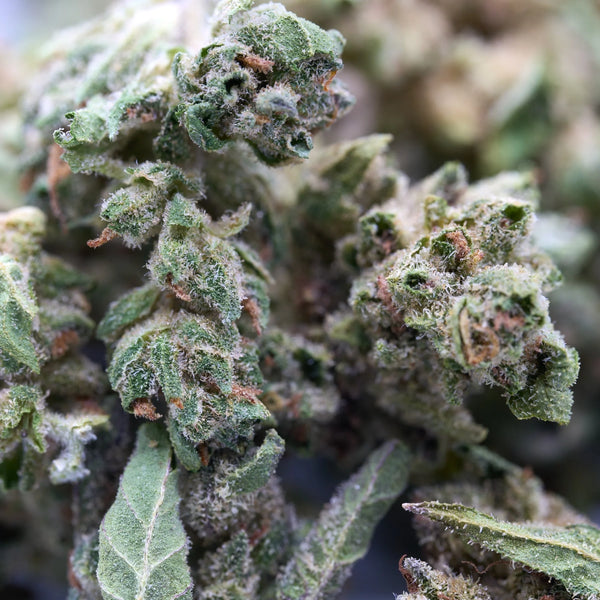
Harvest Day Mistakes
Mistake #8: Wrong Time of Day
Harvesting mid-day: Many growers make the mistake of harvesting whenever they have time available, often during mid-day hours. However, this timing coincides with the hottest temperatures and highest light intensity—both factors that degrade terpenes and cannabinoids. As the day progresses and temperature rises, plants transpire more actively and terpenes volatilize, literally evaporating into the air.
Optimal harvest timing: The best time to harvest is early morning, just after lights turn on (for indoor grows) or shortly after sunrise (for outdoor grows). At this time, plants have just completed their dark cycle when they restore terpene and cannabinoid concentrations in the trichomes. Temperature is coolest, reducing terpene loss, and you have the entire day ahead to process your harvest before buds need to begin drying. This simple timing adjustment represents one of the easiest ways to avoid harvest mistakes and preserve maximum quality.
Mistake #9: Poor Cutting Technique
Damaging plants unnecessarily: Using dull scissors or cutting tools creates ragged cuts that can contaminate your flower. Crushing stems rather than making clean cuts releases internal plant fluids unnecessarily. Dropping or mishandling buds can damage the delicate trichome heads that contain your precious THCA. Perhaps most commonly, growers touch buds excessively during harvest, handling them by the flowers rather than the stems, which causes significant trichome loss—every time you touch a bud, trichomes stick to your fingers and gloves, reducing potency.
Proper cutting and handling: Use sharp, clean scissors or pruning shears to make quick, clean cuts. Handle plants by the stems only, never gripping or squeezing the buds themselves. Work over clean surfaces to catch any fallen trichomes. Wear gloves, but remember that even gloved hands shouldn't contact buds directly. Consider hanging whole plants or large branches rather than processing into individual buds immediately, as this minimizes handling and preserves more trichomes.
Mistake #10: No Organization System
In the chaos of harvest day, it's surprisingly easy to lose track of which buds came from which plants, when they were harvested, or which strains they represent. This becomes especially problematic when growing multiple strains or phenos, making it impossible to evaluate performance or replicate success.
Creating efficient workflow: Before harvest begins, establish a clear labeling system using tags, labels, or markers that won't fall off during drying. Include essential information: strain name, plant identifier, harvest date, and location in the drying room. Create a harvest log documenting what you cut, when, and where it's drying. Take photos for reference. This organization pays dividends not only during the current harvest but also provides valuable data for harvest troubleshooting and planning future grows. The few minutes spent on proper documentation prevent hours of confusion and enable continuous improvement of your cultivation practices.
Mistake #11: Contamination
Cleanliness during harvest directly impacts final product quality and safety. Dirty scissors and tools harbor bacteria, mold spores, and other contaminants that can spread to your buds and proliferate during drying and curing. An unclean work area introduces dust, debris, and foreign material into your cannabis. Hair falling onto buds is not only unprofessional but can also introduce bacteria. Most seriously, existing pest problems—like spider mites or thrips—can infest drying flowers if not addressed.
Sanitation protocols: Sterilize all cutting tools before use and periodically during harvest using isopropyl alcohol. Clean your work area thoroughly before beginning. Wear clean clothing and consider hair nets or hats to prevent contamination. Ensure your drying space is clean and free from pests before hanging any plants. If you discover pest activity during harvest, isolate affected plants and consider whether they're salvageable or should be discarded rather than contaminating your entire harvest. Professional cultivators treat harvest sanitation as seriously as food preparation—your product will be consumed, so maintain appropriate hygiene standards.
Drying Mistakes
Mistake #12: Improper Environment
Environmental control during drying represents one of the most critical phases in harvest failure prevention. When temperature runs too hot (above 70°F), buds dry too rapidly, trapping chlorophyll and harsh plant matter while destroying delicate terpenes. The result is harsh, unpleasant smoke with reduced flavor and aroma. Conversely, excessive humidity (above 65%) creates ideal conditions for mold and mildew, especially in dense colas where airflow cannot reach interior portions of the bud.
Too much airflow causes rapid, uneven drying that damages quality, while insufficient air circulation creates stagnant pockets where moisture accumulates and mold develops. Positioning fans to blow directly on buds is particularly damaging, causing the exteriors to over-dry while interiors remain too moist. Finally, any light exposure during drying degrades cannabinoids and terpenes, reducing both potency and quality.
Proper drying environment: Maintain 60-65°F temperature and 55-62% relative humidity consistently throughout the drying period. Position fans to create gentle, indirect air circulation around the room—air should move continuously but never blow directly on hanging buds. Ensure complete darkness by eliminating all light sources. Use multiple hygrometers and thermometers to monitor conditions, as different areas of a room can have varying microclimates. Run dehumidifiers or humidifiers as needed to maintain target ranges despite external weather changes.
Mistake #13: Rushing the Dry
After months of growing, the temptation to sample your harvest becomes overwhelming. This impatience leads many growers to artificially accelerate drying through increased temperature, excessive airflow, or other shortcuts. The consequences are severe and irreversible.
Consequences of fast drying: Rapid drying locks in chlorophyll and other harsh compounds, creating cannabis that's unpleasant to smoke regardless of how well it's grown. Terpenes, which boil off at relatively low temperatures, are destroyed when subjected to heat. The resulting flower lacks aroma, flavor complexity, and smoothness. Quick-dried cannabis typically produces harsh, scratchy smoke that causes coughing and doesn't properly represent the strain's characteristics. Even extensive curing cannot fully remedy the damage caused by rushing the dry process.
Why patience is crucial: Proper drying typically requires 7-14 days depending on bud density, humidity levels, and how much plant material remains attached. During this slow process, chlorophyll and other unwanted compounds begin breaking down naturally, while terpenes are preserved. The buds undergo chemical changes that improve flavor, smoothness, and overall quality. This cannot be rushed without significant quality loss.
Resisting the temptation: If you absolutely must sample early, take a small test bud and dry it separately rather than compromising your entire harvest. Focus on the bigger picture—waiting an extra week for properly dried cannabis is insignificant compared to the months you've invested in growing. Some of the biggest mistakes harvesting cannabis come from impatience at this critical juncture. Trust the process and let time work its magic.
Mistake #14: Over-Drying
While rushing the dry is problematic, the opposite extreme also causes significant issues. Over-dried cannabis becomes brittle and crumbly, with stems snapping crisply rather than bending. The flowers lose their pleasing texture and "give" when squeezed, instead crumbling into dust. Terpenes continue escaping from over-dried material, reducing aroma and flavor. You'll also lose weight—moisture content that should remain in properly dried flower (around 10-12%) has evaporated, reducing your final yield.
Prevention strategies: Monitor your drying buds daily by testing stem flexibility. Properly dried cannabis has stems that bend but don't snap cleanly—they should crack or partially break while maintaining some flexibility. The exterior of buds should feel dry to the touch, but when broken open, the interior should retain slight moisture. Begin checking after day 7, and don't assume a fixed timeline—environmental conditions, bud density, and initial moisture content all affect drying speed.
Can it be fixed? Partially, yes. If you catch over-drying early, you can attempt to rehydrate using humidity packs (Boveda or Integra Boost) in sealed containers. The buds will reabsorb some moisture and become less brittle, though you cannot fully restore lost terpenes. Prevention through careful monitoring is far superior to attempted remediation. This represents another reason why THCA harvest tips emphasize patience and proper environmental control throughout the post-harvest process.
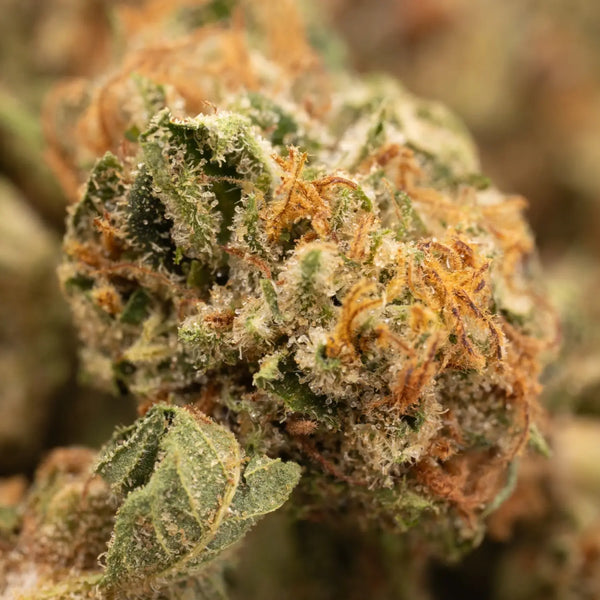
Curing Mistakes
Mistake #15: Skipping Cure Entirely
Many growers, exhausted from the growing process and impatient to enjoy their harvest, skip curing entirely or severely shorten this crucial phase. They reason that the buds are dry, so they must be ready to consume. This represents a fundamental misunderstanding of what curing accomplishes.
What they lose: Uncured or poorly cured cannabis, even when properly grown and dried, delivers harsh, unpleasant smoke. The flavor profile remains one-dimensional and "green" rather than developing the complex, nuanced tastes that characterize quality cannabis. The smoke scratches the throat and triggers coughing. Potency, while perhaps technically similar in THCA content, doesn't feel as strong because the harsh smoke prevents full inhalation. Most importantly, you'll never know what your cannabis could have been—curing reveals the true character of your strain.
Minimum cure time: While extended curing (2-6 months) produces exceptional results, even a minimal 2-4 week cure dramatically improves quality over uncured flower. During this period, remaining chlorophyll breaks down, harsh compounds dissipate, and terpene profiles mature and become more complex. Think of curing like aging wine or cheese—time allows chemical processes to develop depth and character that simply cannot be rushed.
Mistake #16: Improper Burping
Burping—the process of opening curing containers to exchange air and release accumulated moisture—requires consistency and attention. Not burping enough creates mold risk as moisture cannot escape, eventually leading to ammonia smells or visible mold growth. Burping too frequently or for too long causes over-drying, reversing the benefits of curing. An inconsistent schedule creates unpredictable results, sometimes too wet and sometimes too dry.
Proper burping protocol: For the first week of curing, open containers once or twice daily for 10-15 minutes. After the first week, reduce to once every 2-3 days. After two weeks, once weekly is sufficient. Monitor moisture levels during each burping—if buds feel too moist or the container shows condensation, extend burping time. If buds are becoming brittle, reduce burping frequency. The goal is maintaining 58-62% relative humidity inside containers, which creates ideal conditions for the curing process while preventing mold.
Mistake #17: Wrong Humidity in Jars
Humidity control during curing represents one of the most critical yet commonly mismanaged aspects of post-harvest problems. When buds go into jars too wet (above 65% RH), they create perfect conditions for mold development. An ammonia smell during burping indicates anaerobic bacteria activity—a clear sign of excessive moisture. At this point, you must remove the buds from jars and allow additional drying before resuming the cure.
Conversely, curing overly dry cannabis (below 55% RH) doesn't work effectively. The chemical processes that occur during curing require specific moisture levels to proceed. Without adequate moisture, the cure stalls, and you're essentially just storing dry cannabis rather than improving it.
Not using humidity packs: Two-way humidity control packs (Boveda or Integra Boost) represent an insurance policy against humidity fluctuations. These packs maintain precise humidity levels (58% or 62% are ideal for cannabis), absorbing excess moisture when RH is too high and releasing moisture when it's too low. While they cost a few dollars per pack, they're reusable and prevent the loss of entire harvests to curing errors.
Not monitoring with hygrometer: Many growers place buds in jars and hope for the best, never actually measuring humidity levels. Small digital hygrometers designed to fit inside curing jars cost only a few dollars each and provide precise readings of the internal environment. Without this data, you're guessing—and when it comes to preserving months of work, guessing isn't good enough.
Post-Harvest Processing Mistakes
Mistake #18: Trimming Too Aggressively
Whether you trim wet (immediately after harvest) or dry (after the drying phase), aggressive trimming can significantly damage quality. Removing too many trichome-covered sugar leaves in pursuit of "bag appeal" eliminates potent material that should be part of the final product. Touching and handling buds excessively during trimming causes trichome loss—every time you touch a bud, precious THCA-containing trichome heads stick to your fingers, scissors, or gloves.
Machine trimming, while efficient for large operations, typically damages buds more than hand trimming. Machines can be rough on flowers, knocking off trichomes and creating a more uniform but less potent product. The trim quality also tends to be less precise, sometimes removing too much or leaving uneven results.
Finding the balance: Trim enough to remove fan leaves and create an appealing appearance, but leave sugar leaves that are heavily frosted with trichomes. Hand trimming, while time-consuming, preserves more trichomes and allows for precise, careful work. Handle buds gently and as little as possible—hold branches by the stems rather than gripping flowers directly. Consider whether wet or dry trimming suits your situation better: wet trimming is faster and easier but may trap more chlorophyll, while dry trimming preserves more terpenes but is more tedious and creates more mess.
Mistake #19: Poor Storage Immediately After Cure
After investing time in proper curing, some growers sabotage their efforts through poor storage practices. Leaving cured cannabis in unsuitable containers—like plastic bags that don't seal well or containers that aren't airtight—allows continued moisture loss and terpene evaporation. Exposure to light and heat during storage begins degradation immediately, as UV light breaks down cannabinoids and elevated temperatures accelerate terpene loss.
Proper long-term storage: Transfer fully cured cannabis to airtight glass jars with quality seals. Store in a cool (60-70°F), dark location away from direct light and heat sources. Include humidity packs to maintain 58-62% RH for optimal long-term preservation. Label containers with strain and cure date. For extended storage (6+ months), consider vacuum sealing or storing in a cool basement or refrigerator for maximum preservation.
Mistake #20: Not Testing or Documenting
The final mistake involves missing opportunities for learning and improvement. In jurisdictions requiring compliance testing, skipping this step isn't just a mistake—it's illegal. Testing provides crucial data about cannabinoid and terpene profiles, confirms the absence of contaminants, and validates your cultivation practices.
Beyond compliance, documentation serves as your roadmap to replicating success and avoiding harvest mistakes in future grows. Without noting what worked and what didn't—environmental parameters, harvest timing decisions, drying duration, curing protocols—you lose valuable learning opportunities. Each harvest should build on lessons from previous cycles, but this is impossible without documentation.
What to document: Record harvest date and trichome appearance at harvest, drying duration and conditions, curing protocol and duration, final yield, quality assessment (smell, taste, smoothness, potency), any problems encountered, and what you'd do differently next time. Take photos throughout the process. Over multiple grows, these records become invaluable, allowing you to identify patterns, optimize your process, and consistently produce premium-quality THCA flower.
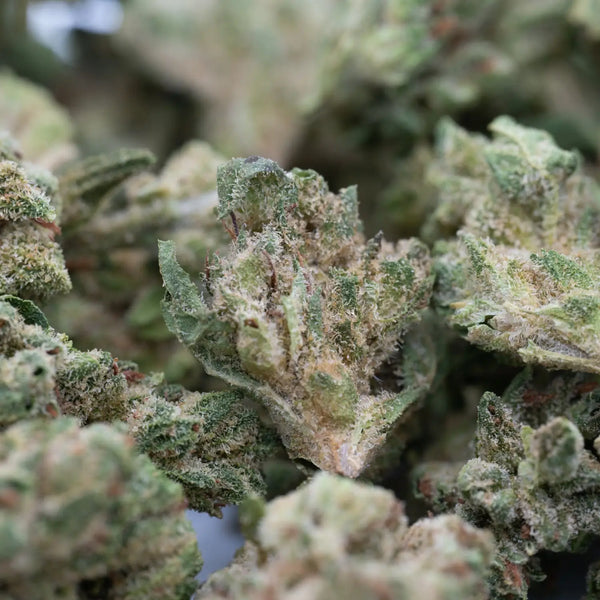
Recovery and Prevention Strategies
Learning from mistakes is valuable, but preventing them in the first place is ideal. Here's how to minimize harvest errors and continuously improve your results:
Creating checklists: Develop comprehensive checklists for each phase of harvest. A pre-harvest checklist should verify that drying space is prepared, tools are cleaned and sharpened, containers are ready, and schedules are clear. A harvest day checklist ensures proper timing, technique, and organization. Post-harvest checklists confirm environmental parameters and documentation completion.
Step-by-step SOPs: Standard Operating Procedures (SOPs) document your proven processes in detail. Once you've refined your technique, write it down step-by-step so you (or others) can replicate it consistently. SOPs eliminate guesswork and ensure quality remains high even when circumstances change.
Learning from each harvest: Conduct a post-harvest review after each grow. What went well? What would you change? Compare your results to previous harvests. Use this reflection to refine your SOPs and checklists continuously.
When to ask for help: The cannabis community is remarkably supportive. If you encounter problems beyond your experience level—mold issues, severe pest problems, mysterious quality defects—seek guidance from experienced growers through forums, local growing communities, or cultivation consultants. Asking for help early can save entire harvests.
Investing in proper equipment: Quality tools and equipment aren't expenses—they're investments in harvest quality. Proper microscopes for trichome inspection, accurate hygrometers and thermometers, appropriate drying racks, quality curing containers, and sharp trimming scissors all contribute to better outcomes. The cost is minimal compared to the value of your harvest.
Education and research: The cannabis cultivation field continues evolving with new techniques, technologies, and understanding. Stay current through books, online courses, forums, and cultivation resources. What we "knew" about growing five years ago has been refined and expanded. Continuous learning prevents stagnation and exposes you to improved methods for trichome damage prevention and harvest timing.
Frequently Asked Questions
Q: What's the single most important factor in avoiding harvest mistakes?
A: Patience. The majority of harvest mistakes stem from rushing some aspect of the process—harvesting too early, drying too fast, or skipping the cure. Cannabis quality requires time, and there are no shortcuts that don't compromise results.
Q: Can I fix over-dried cannabis?
A: Partially. You can reintroduce moisture using humidity packs in sealed containers, which will restore some texture and prevent crumbling. However, you cannot restore lost terpenes or fully recover the smoothness of properly dried flower. Prevention through careful monitoring is always better than attempted fixes.
Q: How do I know if my drying environment is correct?
A: Use hygrometers and thermometers to measure, don't guess. Target 60-65°F and 55-62% relative humidity. If your environment can't maintain these ranges naturally, use environmental controls (dehumidifiers, humidifiers, AC, or heaters) to dial in conditions. Test your drying space for several days before harvest to ensure stability.
Q: Is wet trimming or dry trimming better?
A: Both methods work, with different tradeoffs. Wet trimming (immediately after harvest) is faster and easier but may trap more chlorophyll if done too aggressively. Dry trimming (after drying) preserves more terpenes and is less harsh on trichomes but is more tedious and messy. Many growers find a middle approach works best: remove large fan leaves wet, then do final trimming after drying.
Q: How long should cannabis cure?
A: Minimum 2-4 weeks for acceptable quality, though 4-8 weeks produces significantly better results. Many connoisseurs cure for 2-6 months for optimal flavor, smoothness, and complexity. The good news is that properly cured cannabis, when stored correctly, continues improving for months and remains high-quality for a year or more.
Q: Should I harvest the whole plant at once?
A: Not necessarily. If there's significant maturity difference between top and lower buds, phased harvesting allows you to optimize each section. Harvest mature top colas first, then let lower growth develop further. This can increase both quality and total yield.
Q: What humidity should I maintain during curing?
A: 58-62% relative humidity inside curing containers is ideal. Below 55% and the cure stalls; above 65% and mold risk increases significantly. Use two-way humidity control packs and hygrometers to maintain this range precisely.
Q: How can I tell if my harvest has mold?
A: Watch for fuzzy white, gray, or black growth on buds, particularly inside dense colas. An ammonia smell during curing indicates bacterial issues from excess moisture. Immediately remove affected material to prevent spread. If caught early and the problem is isolated, you may salvage unaffected portions by removing contaminated buds, improving airflow, and reducing humidity.
Q: Are there any techniques to improve potency at harvest?
A: The best "technique" is simply harvesting at peak maturity when trichomes are mostly milky with 10-20% amber. Some growers use extended darkness (24-48 hours) before harvest, though evidence for effectiveness is mixed. Focus on fundamentals: proper timing, gentle handling, optimal drying, and thorough curing all preserve maximum potency better than any "trick."
Q: What should I do if I harvested too early?
A: Unfortunately, you cannot increase potency after harvest. Use the flower for extracts or edibles where the lower potency is less noticeable. Most importantly, learn from the mistake—document what the trichomes looked like and commit to waiting longer next time. Every grower makes this mistake once; experienced growers don't make it twice.
Conclusion
Cannabis harvest mistakes happen to everyone—from first-time home growers to commercial cultivation operations. The difference between consistent success and repeated disappointment lies not in avoiding mistakes entirely, but in learning from them systematically and implementing practices that minimize errors.
Every mistake covered in this guide—from harvest timing errors to post-harvest problems—represents a lesson that countless growers have learned the hard way. By understanding these common pitfalls, you can sidestep them and protect the months of effort you've invested in cultivation.
The path to mastery involves continuous improvement. Create systems that work for your situation, document your processes, learn from each harvest, and refine your techniques over time. Invest in quality equipment, prioritize proper environmental control, and above all, exercise patience. The difference between good cannabis and exceptional cannabis often comes down to resisting the urge to rush and allowing each phase—harvest, drying, and curing—to proceed at its natural pace.
Remember that even when mistakes happen, they're not complete failures if you learn from them. Each harvest teaches valuable lessons that make the next one better. Approach the process with curiosity, attention to detail, and a commitment to quality. Your reward will be premium THCA flower that represents the true potential of your plants and your skills as a cultivator.
Whether you're growing for personal use or commercial production, these principles apply universally. Take your time, trust the process, and never stop learning. Your future harvests will thank you.

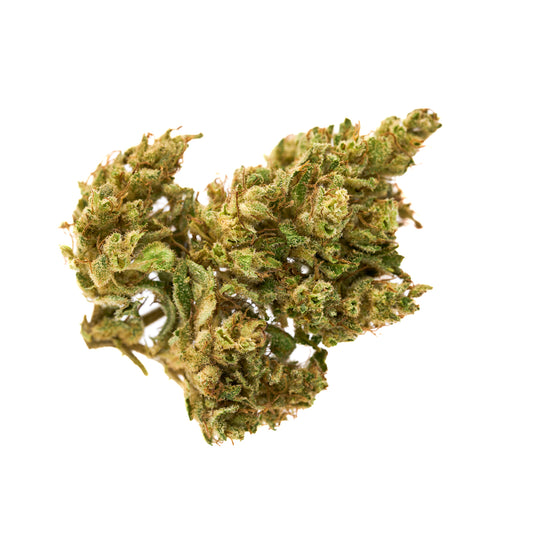
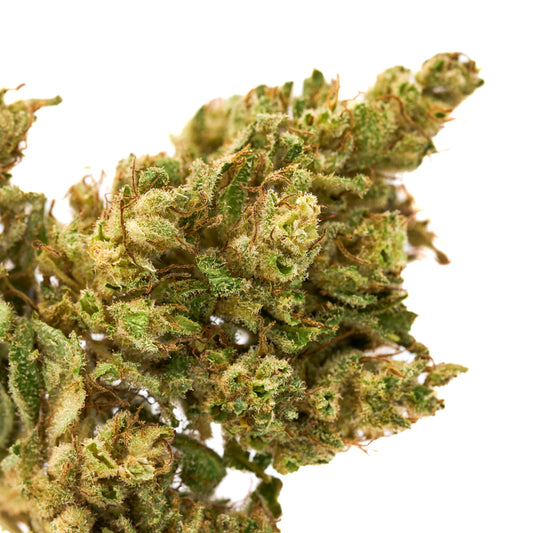
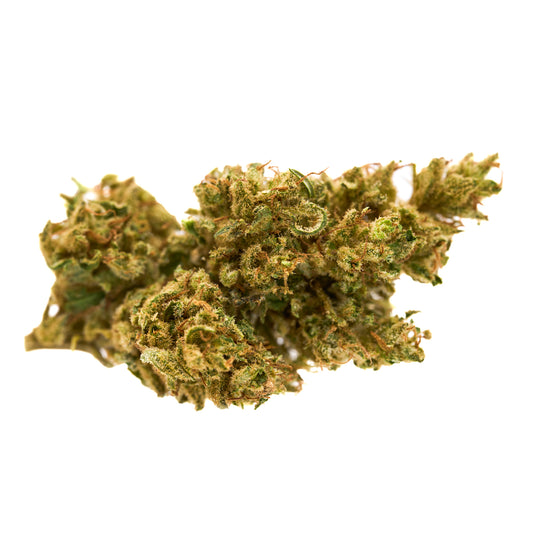

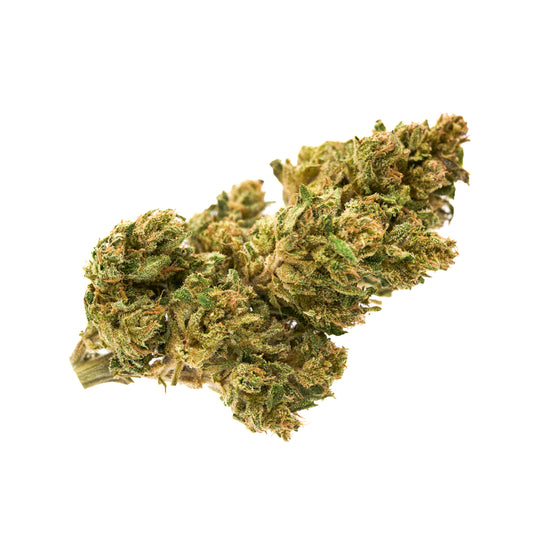




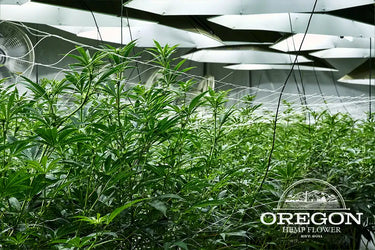

Leave a comment
Please note, comments need to be approved before they are published.